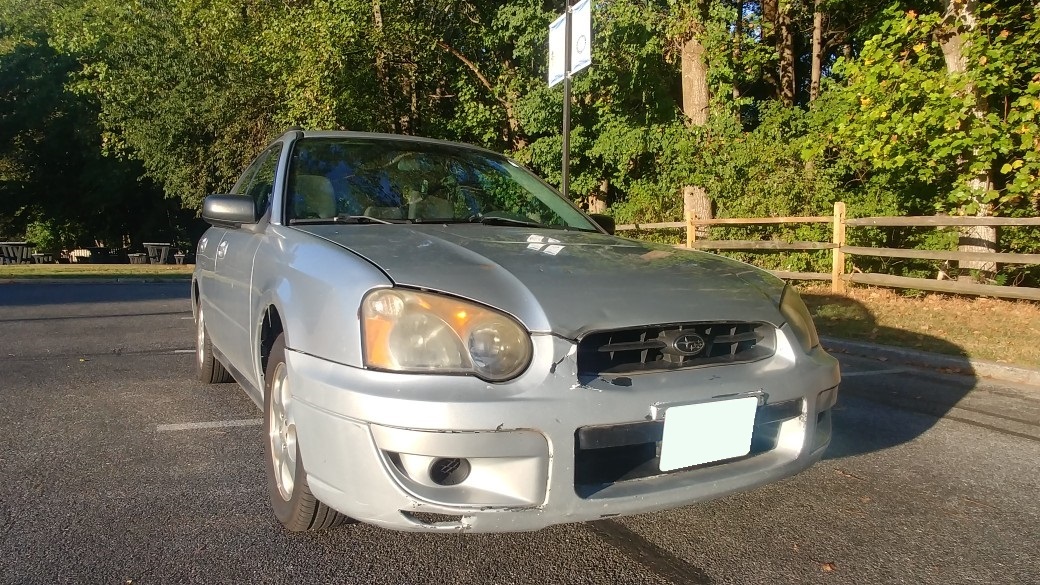
The obligatory "Lesbaru" discussion.
I feel as though the common association of Subaru with lesbians is the elephant in the room for this review. As a lesbian myself, is it even possible to take seriously any lesbian perspective on Subarus that doesn't touch on how much lesbians supposedly love Subarus? I am loath to fall into the trap of allowing my literature and art to fall into patterns supposedly prescribed by the nature of my identity. However, I might also be remiss in omitting one of the most well known instances of "cars as material cultural traditions" currently present in the modern cultural zeitgeist from a project specifically intended to investigate such things.
In any case, the first step to developing an interpretation of this car was to investigate the nature of the "Lesbians love Subarus" stereotype. The topic has been widely discussed by popular media but solid sources are hard to come by, but all the articles I found pointed to a change in Subaru's marketing strategies in the late 1990s, when their sales were declining and they rather desperately needed a way to appeal to their core audience. Marketing research ended up revealing that not only were technical professionals, outdoors enthusiasts, and high-demand professionals like teachers and nurses drawn to Subarus, but lesbians were as well (See the transcript of Planet Money episode 729, the closest thing we have to a primary source on the matter). With LGBT topics rapidly entering the mainstream media (for example, the renowned "Puppy Episode" of Ellen in which the titular character comes out as a lesbian), the time was ripe for mainstream art and popular media to embrace the existence of LGBT people, both as humans and as consumers.
There was also of course backlash to the presence of LGBT people and themes in media, the Defense of Marriage Act having been signed into law by Democratic President Bill Clinton the year before Ellen's coming out. Subaru may not have had anything to lose from such a campaign, though. Sales and company morale were both falling fast, and finding a niche market that was particularly brand-loyal was a priority. In the 1990s, such a marketing campaign was not only timely and lucrative, but served as a tacit validation of the presence of LGBT people in society and the market. Alfred Verhoeven, in his project "Marketing the Rainbow," writes that Subaru's LGBT advertising campaign "was such an unusual decision -and such a success - that it helped push gay and lesbian advertising from the fringes to the mainstream." Business of course does not exist in isolation from politics and culture, but rather operates alongside them, and with them. The context, ramifications, and undeniable results of the Lesbaru campaign is a prime example of this. In fact, it worked so well that "when the recession hit, Subaru was the only car company in the U.S. not to lose market share." (NPR).
While Subaru has since distanced themselves from lesbians and the quirky and offbeat image associated with lesbian material culture, the cultural memory of the Lesbaru lives on. Subaru has since become a safe, normal brand, like Toyota or Chevrolet; Noel King of NPR said that "since the '90s when this started, so many more people are just living out and what was niche is now just much more mainstream," making niche marketing outdated in the presence of modern advertisement strategies that leverage the best, and worst, of the Information Age. This Impreza wagon, from 2004, was built right in the middle of Subaru's targeted marketing campaign, and we can therefore use it as an example of what Subaru was selling to The Lesbians, but also to investigate the kind of car company Subaru used to be, and how they wanted to be seen.
What was the lesbian of 2004 buying?
In 2004, as discussed above, Subaru was still a "weird" and "niche" company: By the 21st century, nearly all other manufacturers had moved to transverse front wheel drive architectures, enjoying the obvious benefits of space efficiency, crash protection, and weight that that configuration confers. Subaru, on the other hand, had stuck with the Leone-style longitudinal FWD powertrain, made possible by the compact nature of their boxer engines.
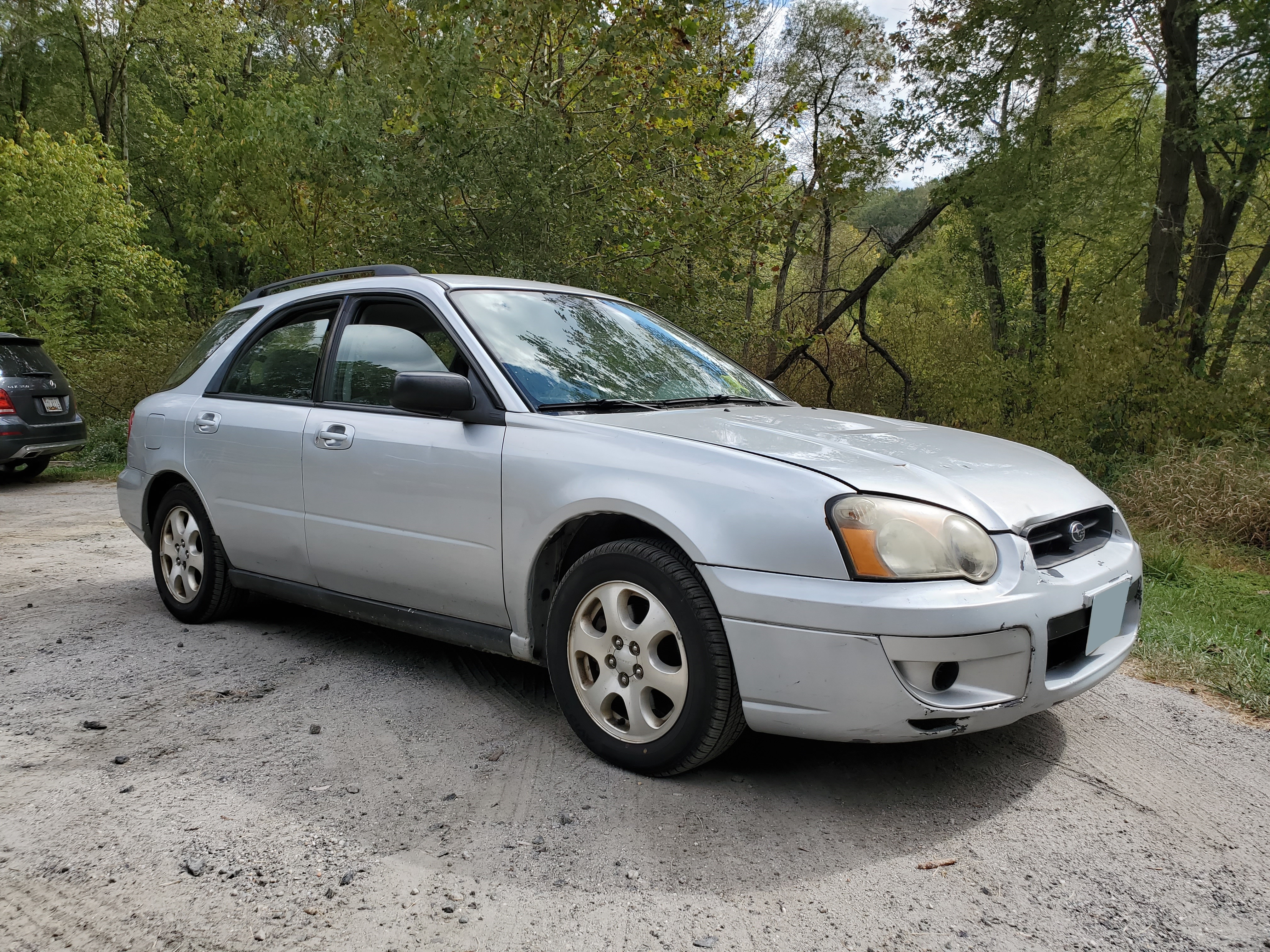
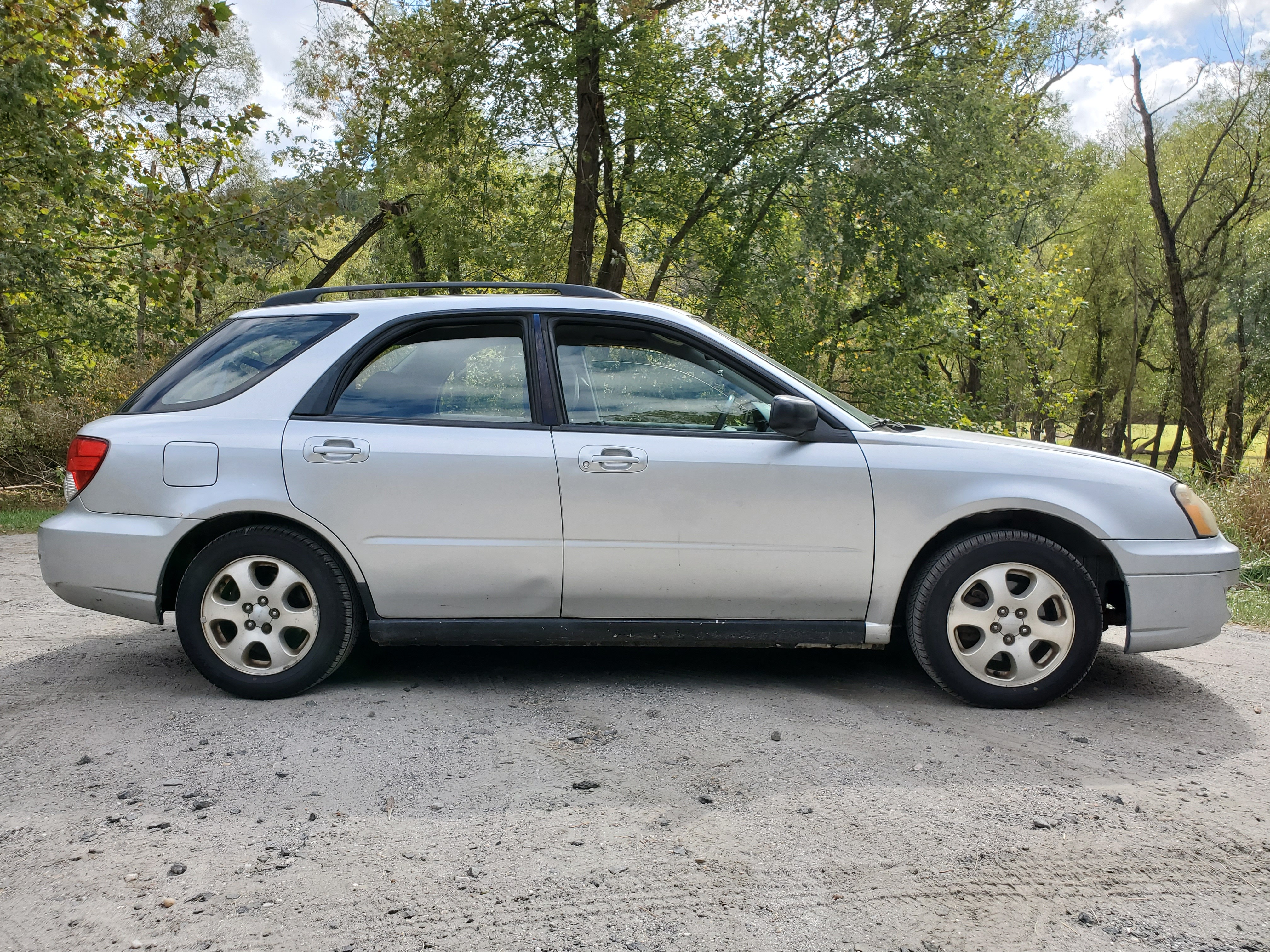
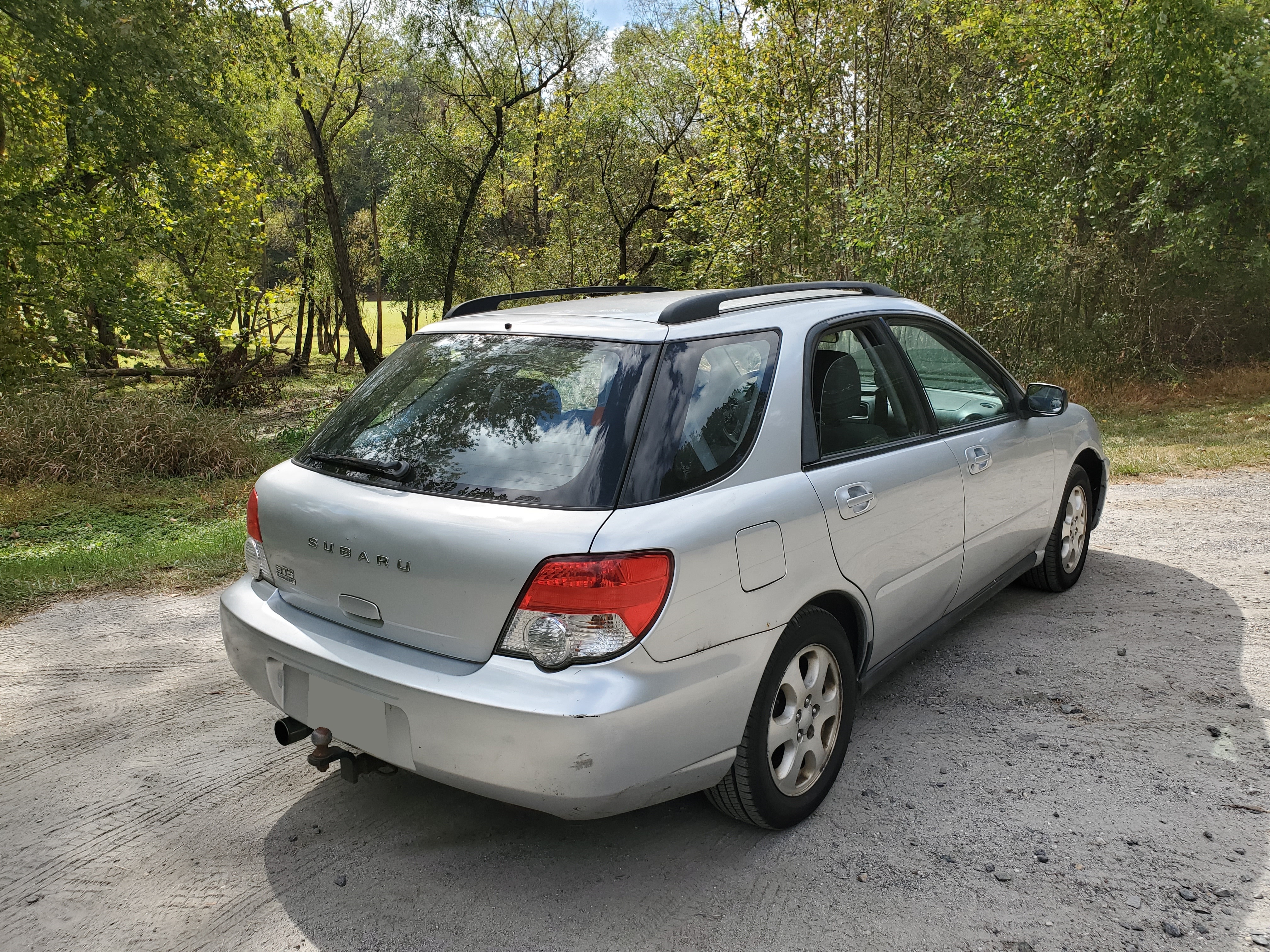
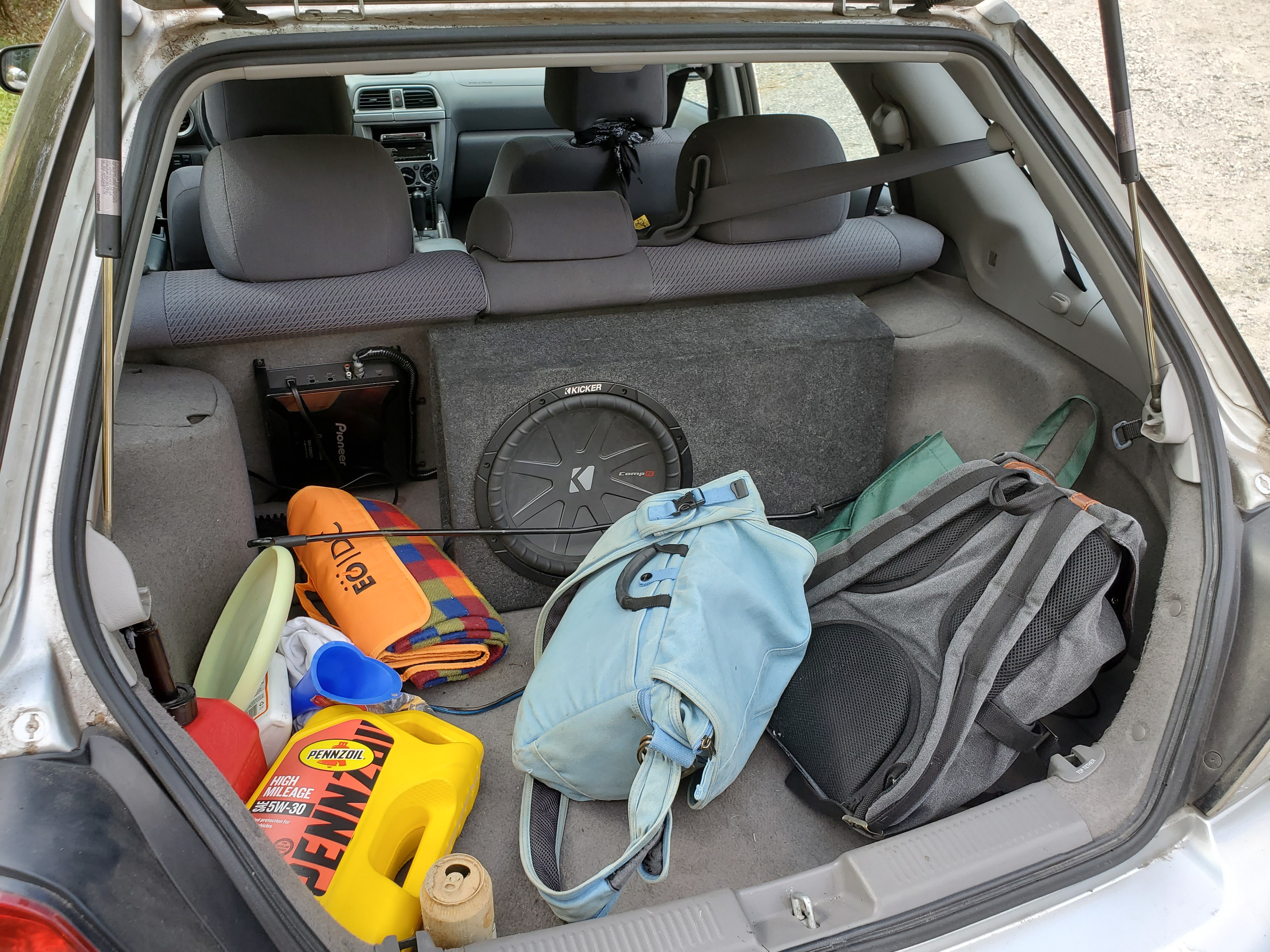
The second generation Subaru Impreza is ultimately quite space efficient for a longitudinal engine car. Compare to longitudinal front wheel drive Audis, with their long noses, or Chrysler LH-platform cars, with similarly bulky hoods; the short major length of the boxer engine gives the Impreza the shorter hood of a transverse engined car. The fact of all wheel drive robs some space from the back seat footwell, but the Impreza wagon is honestly on the smaller end of compact anyways; by today's standards, this is a subcompact car. The seats aren't amazingly comfortable, but they're supportive, and certainly work as well as economy car seats should be expected to, though rear legroom is limited. Subaru's rear strut-type suspension impinges on trunk space somewhat, with the shock towers intruding into the cargo area, but the wagon still boasts more cargo room than the sedan. This Impreza is sized for smaller families, as a full back seat would feel very cramped indeed; larger families, and users with more need for space and utility, must have opted for the larger Legacy instead; it feels like Subaru was sacrificing some utility to make a smaller car. According to Wikipedia, the wagon's compact size is no mistake, being built narrower than the rally-homologated sedan to fit into a smaller tax bracket in the Japanese market. For just one or two people, however, the Impreza is reasonably sized and rather spacious, and makes a solid daily driver.
In fact, making a good daily driver may well have been Subaru's prime goal with the design of the Impreza; it seems to have been designed largely to be a "driver's car." Visibility, like in many early 2000s cars, is excellent all around, impaired only slightly by the deep C-pillars. Highway driving is made further easier by a quiet cabin and solid steering, and the Impreza is a comfortable car for both highway commuting and road trips. The driver's seat is of course well-adjustable, though moving it back for a longer-legged driver does intrude on the rear's legroom substantially. This Impreza also features cruise control, though that was relegated to a paddle rather than being on the face of the steering wheel. While odd for the time, this allows Subaru to use the same wheel across different trims, and lets them maximize the space available for the driver's airbag. The wheel itself is large for a car this size, but it makes steering responsive and communicates road feedback well. The gauge cluster and center console are nothing special for the time, with perhaps the only outstanding feature (or rather, lack thereof) being that there seem to be only two cupholders in the entire car, one secreted away behind an extensible panel above the center console.

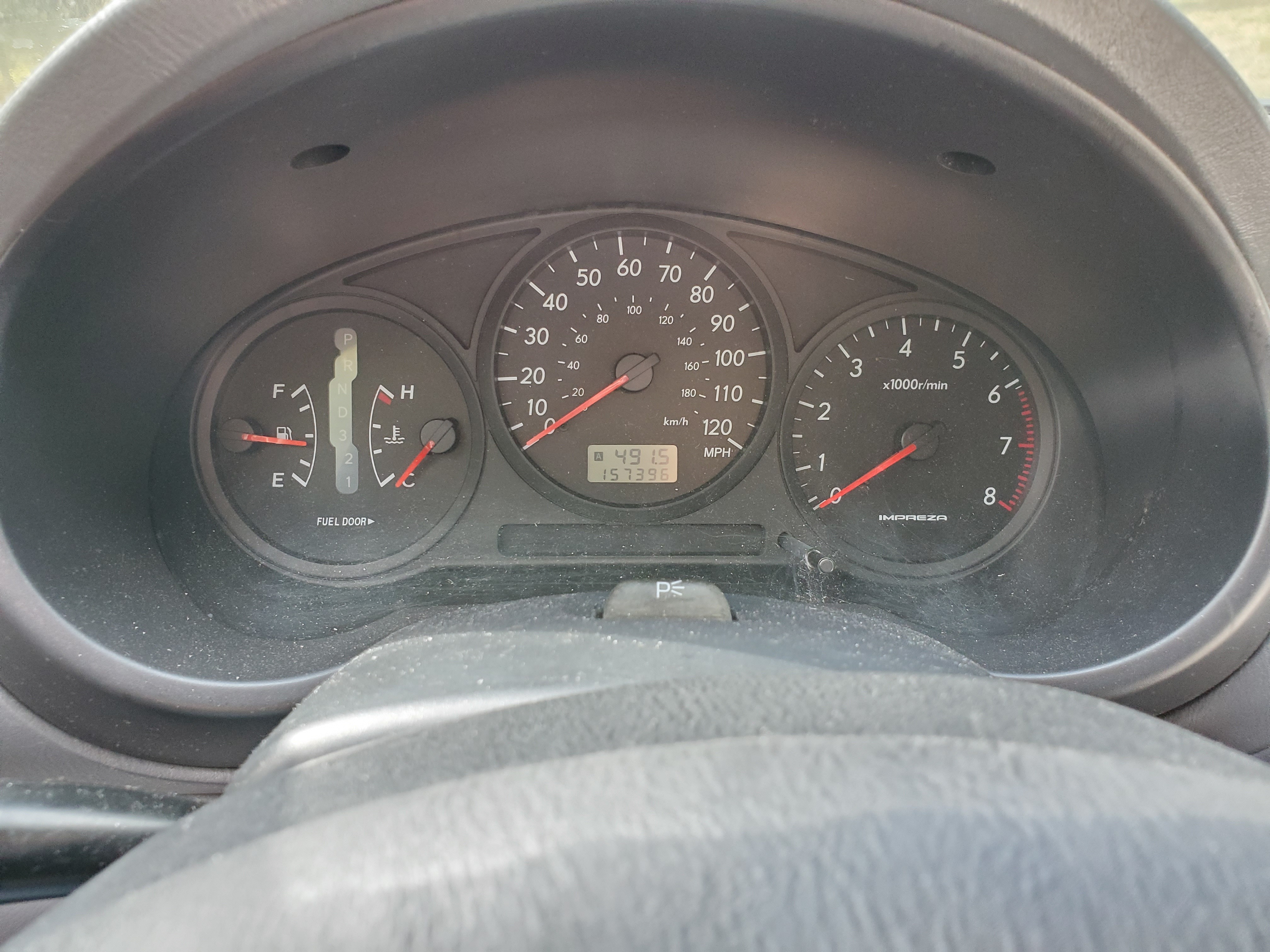
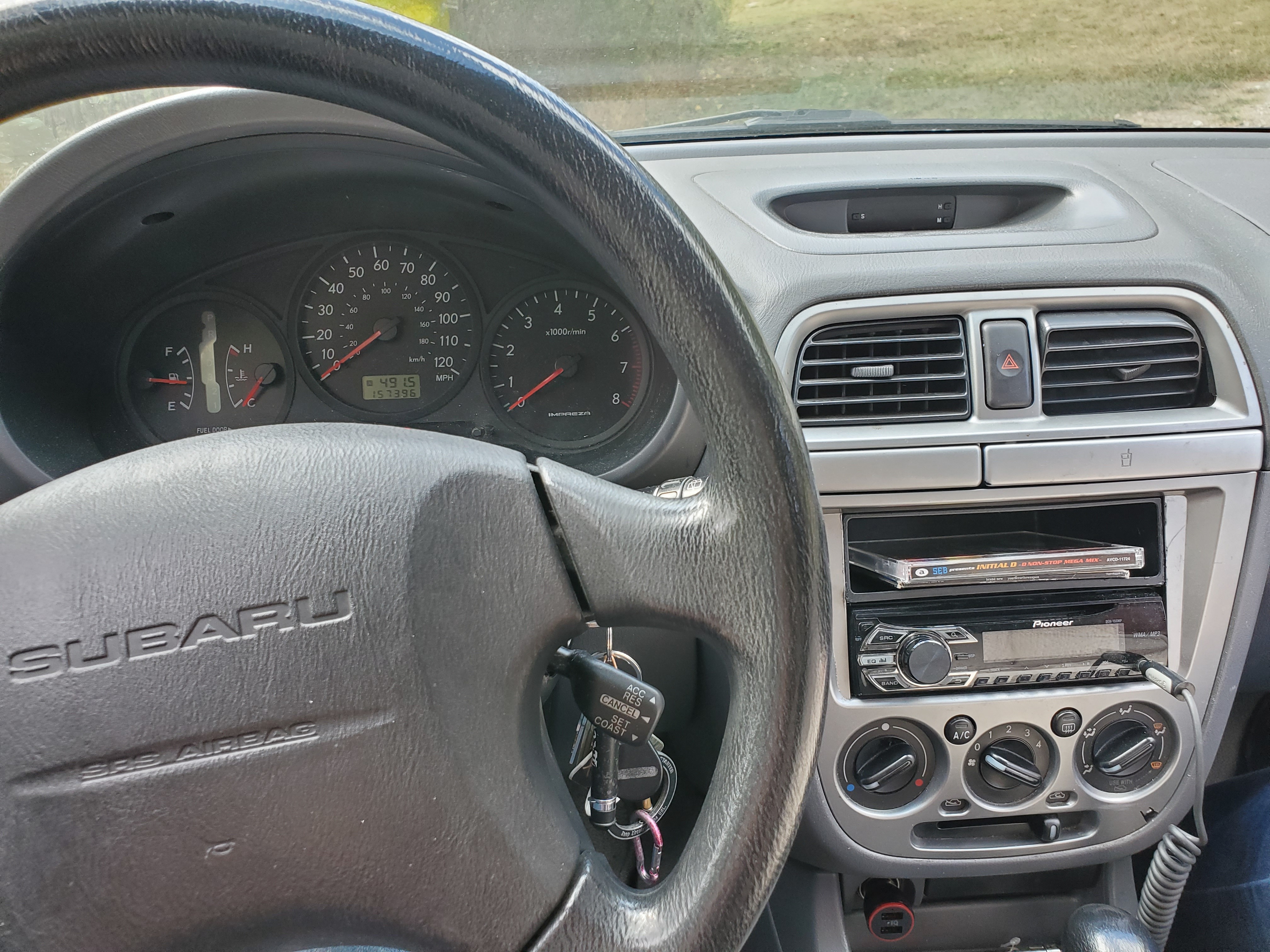
Where this Subaru shines is not in the interior and features, but rather, its performance. Like many other compacts of the 1990s and 2000s, the Impreza uses strut-type suspension on all four wheels; while wishbones and multilink systems may be superior kinematically (by some standards) the struts offer predictable wheel camber control in general, and in this car in particular, confer outstanding handling. The limits of grip of the 2004 Impreza are far and beyond those of many of its contemporaries, and unlike many front wheel drive cars, it feels solid, predictable, and planted during all phases of a corner. My 2006 Civic, by comparison, starts to lose the front wheels when completing a corner, though it has quick and responsive turn-in: Conversely, the Impreza is totally responsive and confident in basically any corner. The car's weight distribution also feels neutral, perhaps helped by the presence of the wagon rear end and all wheel drive hardware, and simply put, this is one of the best handling cars I have ever driven, perhaps second only to the 2016 Audi A4 Allroad or 2013 Volksagen Golf GTI. The Impreza handles like a much more expensive car. I can only imagine how good the WRX or STi version would be. In addition to handling, the suspension also manages a solid compromise between road feel and comfort, with little to no body bouncing on speed bumps and adequate road surface feedback. The suspension is as comfortable as a much more modern car, and doesn't feel cheap or unrefined in the slightest.
Slowing down for these corners is of course the job of the brakes. All wheel discs are a nice touch for 2004, though I found the brakes to require more force than I consider ideal. While they are responsive, the brakes make the car feel heavy. Acceleration, on the other hand, is much less of a problem. The 2004 Impreza wagon uses a 2.5L flat four, which develops about 160hp and 167 lb-ft, according to Wikipedia. This makes acceleration punchy, especially from a stop, and the engine seems to have solid torque available at any speed, making passing easy on the highway. The engine also revs high and smoothly, with the vibration much less noticeable than the noise; perhaps one of its only vices is the fact that the firing pattern of a boxer motor is slow and tractor-like, especially when the engine is pushing hard. At speed in top gear, the engine is quiet, but in lower gears, it intrudes noticeably on cabin noise. The other vice is that Subaru made this 2.5L four-cylinder quite oversquare, as width is obviously the limiting dimension in a flat, front-mounted engine. As a result of that wide bore (and Subaru's vaunted all wheel drive system), fuel economy is not very competitive, and isn't improved by the four-speed automatic transmission.
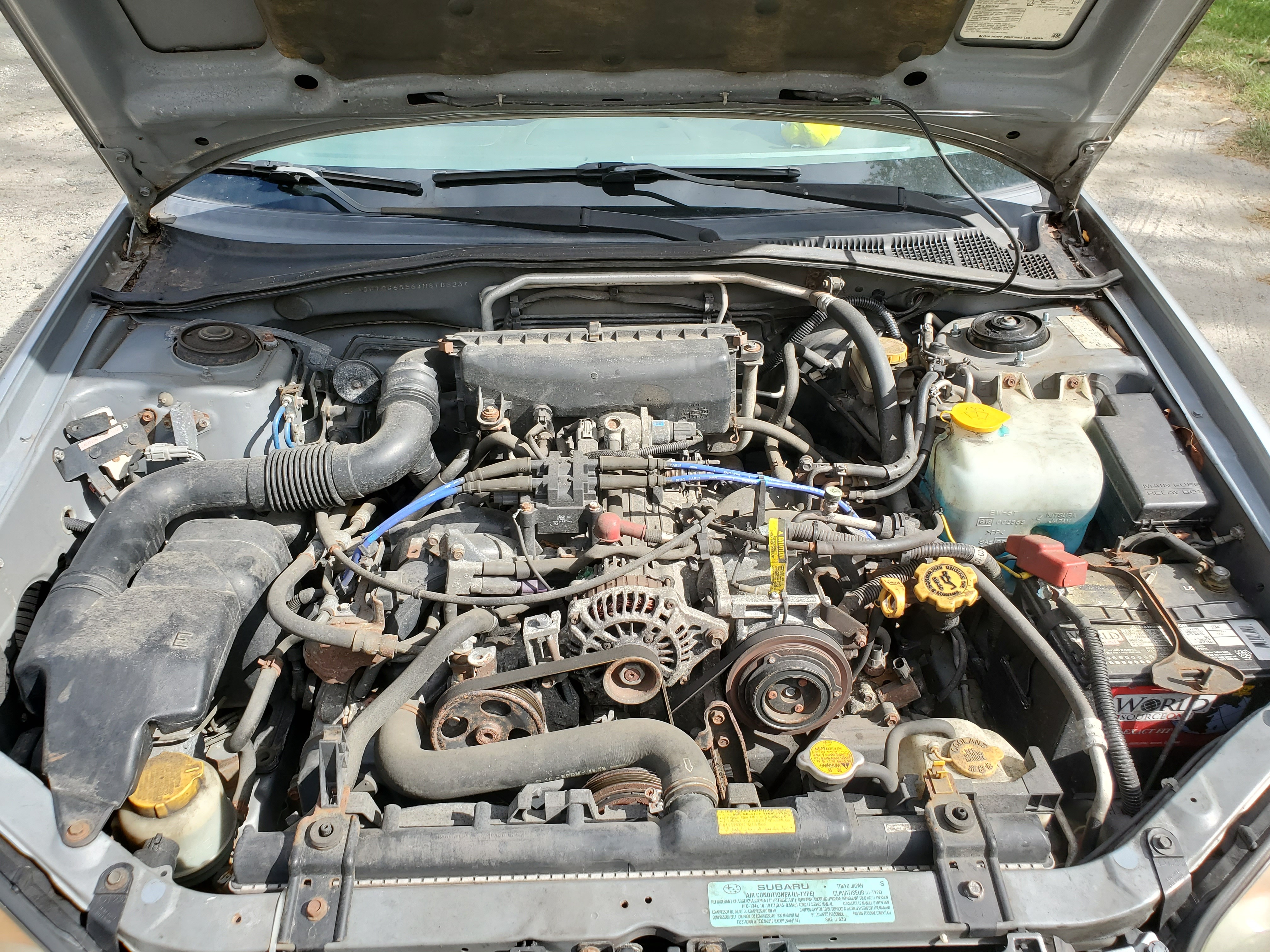

The four-speed automatic transmission is an electronically controlled unit from Subaru, apparently based on a Jatco design. The third-generation Impreza also used the same transmission, albeit with a Tiptronic-style manual mode and "Sport" mode instead of the second generation Impreza's more conventional shift gate system. The transmission does feature an internal "power" mode to enable high-performance driving, instead of forcing an otherwise-enthusiastic driver to contend with an economy-optimized shift program, and the driver can select 1 and 2 as singular gears, as well as an overdrive lockout gear, effectively giving her access to all forward gears sequentially. 2, 3, and 4 are far apart, with the very steep 4th gear of course being for highway cruising; the transmission is fortunately reluctant to shift out of 4th when at speed, instead taking advantage of the EJ25 engine's surprising amount of torque. Shifts are generally smooth, though jerky occasionally, but in general, the automatic transmission is composed and competent.
Overall, the Subaru Impreza is a car that is first and foremost designed around the driver's experience; cargo space, interior gizmos, and fuel economy are all less important than handling, acceleration, and ride quality. The all wheel drive system provides good grip both on pavement and gravel, the engine's solid torque takes care of both steep hills and highway onramps, and the well-tuned suspension makes both potholes and tight corners a breeze.
Is this a "Lesbian Car"?
As anyone might expect, not necessarily; a work of art, or a text, that fails to, at its core, validate women's love for one another, cannot be a lesbian text. Since this is a car, it doesn't exactly have the textual leeway necessary to make the emotional, hard-hitting explorations of lesbian identity and sexuality like, say, Alison Bechdel's "Fun Home." Subaru's marketing to lesbians and gays was however predicated on the documentation of lesbians as one of the major buyers of Subaru models. What did they see in their Subarus? Well, if this Impreza is to be at all representative, they saw fun to drive, capable small cars that got reasonable (if not good) fuel economy, and were small and easy to maneuver. These cars were confident in adverse conditions, responsive on the road, and versatile in their uses, for utility and passenger use alike. Is this necessarily something that lesbians would want? Not really, but in, say, Massachussetts in the mid 1990s, cars that were functional yet stylish and capable yet sensible, must have appealed to the kind of person who's listed as a single female head of household.
So lesbians saw Subarus for what they were, small, versatile cars with impressive performance in all aspects; what did Subaru see them as? What did this car in particular mean when it was built? Perhaps it represented what Subaru wanted to think of themselves as; not necessarily gay, but different, unafraid to break the status quo, and uniquely equipped to do it. This is certainly part of the rhetoric that Subaru has returned to in their marketing, and the 2000s Imprezas may well have represented Subaru desperately clinging to what they thought would sell cars, rather than what did. 90s and 2000s Subarus were, in a way, specialty cars; their standard all wheel drive, unique chassis engineering, and enthusiastic embracing of off-road crossover type vehices like the Outback and Outback Sport, endeared them to the kind of people who really needed or wanted those things. The mainstream car buyer of the 1990s simply didn't need those features, that functionality; being different only flies with people who are looking for something different. That rhetoric is starting to pay Subaru back, as modern car buyers want a car that acts safe and acceptable, but still looks and feels funky and different; look at how all full size sedans are sports sedans now, or how all subcompact crossovers are these weird, bubbly things, with strange windows and light fixtures. Now that performative uniqueness is coming into vogue, the modern, diluted Subaru family crossovers and sedans have found their place at last. In the '90s, Subaru was too weird to hit the mainstream, and the best they could do was embrace the margins. The meeting of societal margins and cars that occupy the edges of automotive design, however, was a good match, and the legacy that Subaru made for themselves as a manufacturer of "gay cars" is a lasting one.